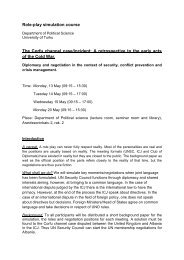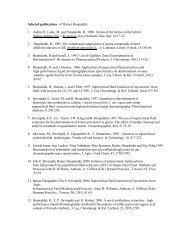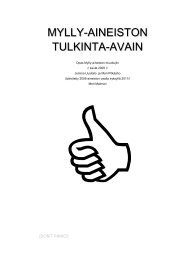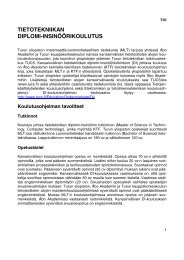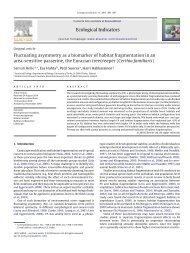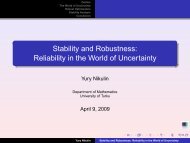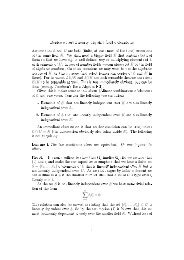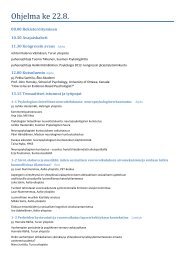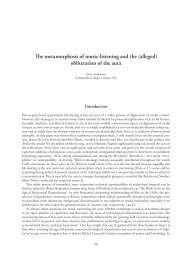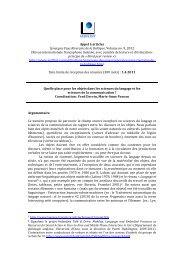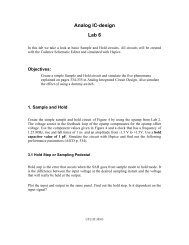MIRHAMI 2030 “Future Images of Food Consumption", Phase
MIRHAMI 2030 “Future Images of Food Consumption", Phase
MIRHAMI 2030 “Future Images of Food Consumption", Phase
Create successful ePaper yourself
Turn your PDF publications into a flip-book with our unique Google optimized e-Paper software.
SECTION II: GLOBAL REPORT SUMMARY & ANALYSIS<br />
Mirhami <strong>2030</strong><br />
ingredients to the market is restaurants. You are able to find very expensive foods and<br />
ingredients in supermarkets from different parts <strong>of</strong> the world.<br />
2.4.5 India<br />
When thinking <strong>of</strong> Indian food consumption and food patterns it has to be kept in mind that<br />
India is a huge country, 10 times larger than Finland with 1.1 billion people. Demographic<br />
factors: age, education, social class, income level, religion: Hinduism, Islam, Buddhism,<br />
Christianity and geographical location: North vs. South; East vs. West, Coastal areas vs. inland<br />
etc, City vs. countryside have influence on eating habits. Since early 1990s India is in a phase <strong>of</strong><br />
rapid economic and demographic transition. Current GDP growth is approximately 8.5 %.<br />
According to current estimates around 200–300 people belong to middleclass which means<br />
that they can afford to more than only the basic necessities. Poverty levels have declined, but<br />
there are still 260–290 million people who are surviving below 1 USD / day. Despite<br />
increasing income levels malnutrition has not declined. On the other hand, millions <strong>of</strong> Indians<br />
are obese. Both hunger and obesity problems exist side by side.<br />
64 percent <strong>of</strong> Indians are nowadays nonvegetarians. Consumption <strong>of</strong> meat is on rise. However,<br />
this does not mean that more than half <strong>of</strong> the population eats meat: fish and eggs are usually<br />
considered nonvegetarian food as well. Furthermore, most <strong>of</strong> the nonvegetarians stick to<br />
vegetarian food in their everyday lives and cook only vegetarian food at home. Meat dishes are<br />
saved for special occasions.<br />
<strong>Food</strong> is prepared mostly at home by women. Cooks are rather common at upper and upper<br />
middle class families. <strong>Food</strong> is prepared from the scratch – readytoeatfood has just made<br />
entry to the market and still not very common. The composition <strong>of</strong> meals is <strong>of</strong> course very<br />
different in different parts <strong>of</strong> the country. Usually Indians have three meals a day: breakfast,<br />
lunch (usually 1–2 PM) and dinner (around 9PM). Snacking between the meals is common.<br />
Sweet milk tea is consumed in large quantities over the day. Foreign dishes, food brands and<br />
restaurant have made their way to Indian cites, but still most <strong>of</strong> the meals consumed are Indian.<br />
Most <strong>of</strong> the shopping is done at small neighborhood shops and vendors.<br />
2.4.6 Japan<br />
<strong>Food</strong> Faddism<br />
The term <strong>Food</strong> Faddism and fad died are terms which refer to the tendency for idiosyncratic<br />
diets and eating patterns. A fad diet is supposed and promoted to improve health but may do<br />
nothing at all, or even have the opposite result if it is nutritionally unbalanced and unconfirmed<br />
by scientific studies.<br />
There are three categories <strong>of</strong> food fads:<br />
One virtue <strong>of</strong> a particular food or food group is exaggerated and purported to cure specific<br />
diseases, and is therefore incorporated as the main constituent <strong>of</strong> an individual’s diet<br />
<strong>Food</strong>s are eliminated from an individual’s diet because they are viewed as harmful<br />
An emphasis is placed on eating certain foods to express a particular lifestyle.<br />
© Finpro & Finland Futures Research Centre<br />
37




